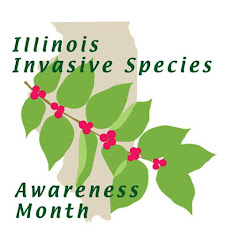Source: Kelly Estes, 217-333.1005, kcook8@illinois.edu
News writer: Stephanie Henry, 217-244-1183, slhenry@illinois.edu
2015 Invasive pest awareness workshops will focus on early detection and response
URBANA, Ill. – University of Illinois Extension has announced the dates for its 2015 Illinois First Detector Invasive Pest Workshops covering important landscape and nursery pests, diseases, and invasive plants. Workshops will be offered at eight locations in Illinois beginning in January 2015.
Early detection and response is key to managing invasive pests. The Illinois First Detector Workshops, now in their third year, are aimed at improving first detector training and invasive species awareness. The workshops will cover new topics on current and emerging invasive plants, pathogens, and insects. Each location will have sessions covering the brown marmorated stink bug, viruses in ornamental plants, and invasive plants and their management, as well as a session devoted to discussing invasive pest pathways.
“Community involvement is key in the early detection of invasive species. We are very excited about these new workshop topics and look forward to working with participants in learning more about these issues facing our local communities,” said Kelly Estes, state survey coordinator.
As in previous years, these in-depth training sessions will cover material that includes:
- Identification/detection
- Life cycle/biology
- Hosts
- Sampling
- Management
- Commonly confused look-a-likes
Once again, those attending will also take part in hands-on activities, which will allow attendees to examine these pests and diseases in more detail.
The target audience includes certified arborists, tree care professionals, Master Gardeners, Master Naturalists, forestry and natural resource professionals, conservationists, and others with an interest in trees.
Continuing Education Units (CEUs) will be available for: IAA Certified Arborists, Continuing Forestry Education Credits, Master Gardener, and Master Naturalist.
Workshops will be held at the following locations:
- Collinsville, Jan. 29 – 618-344-4230
- Wheaton, Feb. 3 – 630-584-6166
- DeKalb, Feb. 4 – 815-758-8194
- Mt. Vernon, Feb. 11 – 618-548-1446
- Charleston, Feb. 12 – 217-543-3755
- Macomb, Feb. 18 – 309-837-3939
- Moline, Feb. 19 – 309-756-9978
- Bloomington, Feb. 26 – 309-663-8306
Those interested in attending should contact the host locations above for registration. A $40 non-refundable registration fee covers instruction, on-site lunch, and training materials. Space is limited.
This program and materials are based upon work supported by the National Institute of Food and Agriculture, U.S. Department of Agriculture, under Agreement No. 2014-70006-22557and coordinated by Kelly Estes, state survey coordinator, IL CAPS Program at the Illinois Natural History Survey, Prairie Research Institute, and Diane Plewa, Plant Clinic diagnostician and outreach coordinator, Department of Crop Sciences. Additional support for this program will be provided by Christopher Evans, the Illinois Wildlife Action Plan - invasive species campaign coordinator, Illinois Department of Natural Resources, and Scott Schirmer, plant and pesticide specialist supervisor, emerald ash borer program manager, Illinois Department of Agriculture.






